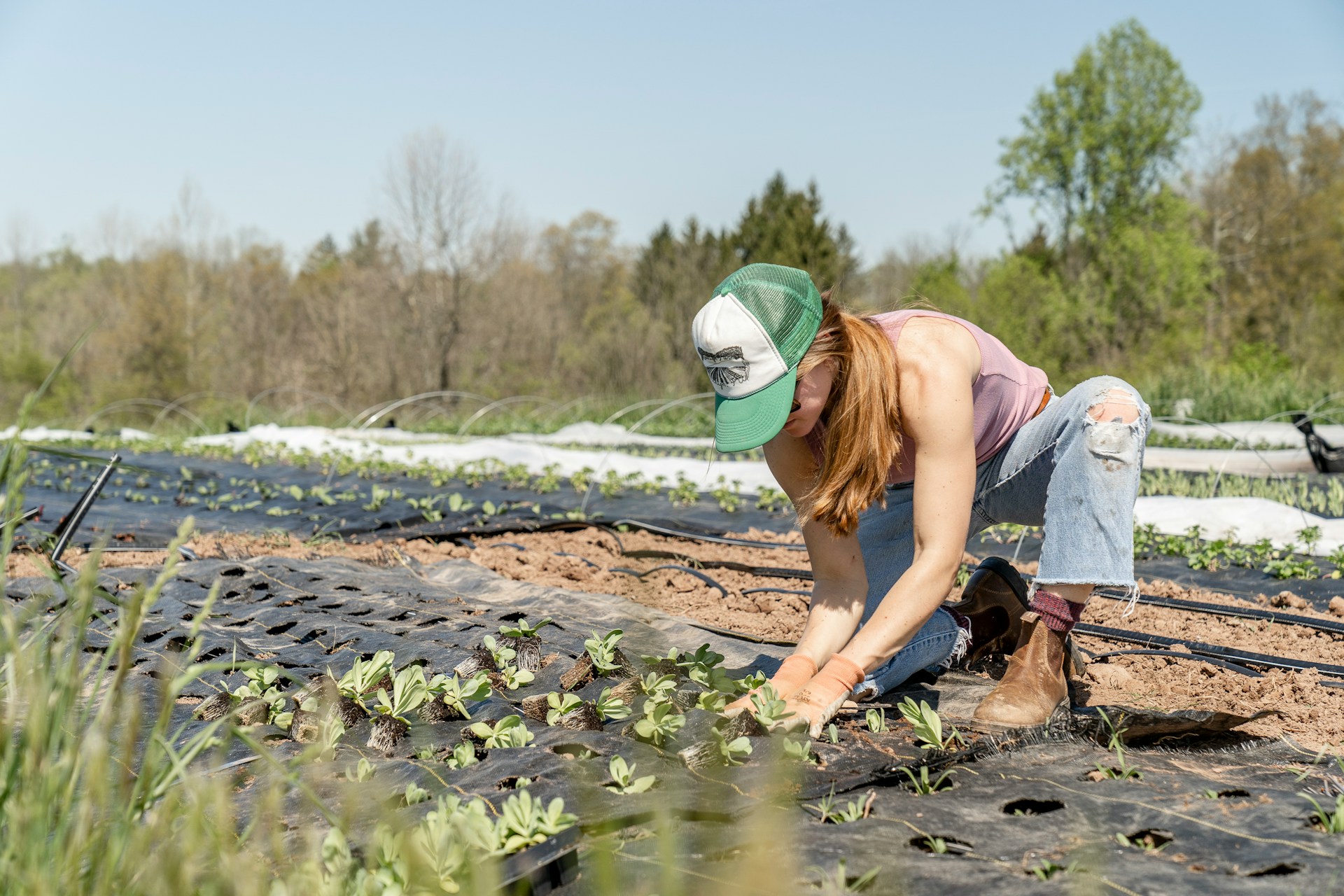
Regenerative Agriculture Debunked and Praised: A Look at This Polarizing Issue
We are reader-supported. When you buy through links on our site, we may earn affiliate commission.
Regenerative agriculture has become a buzzworthy topic recently. It is also somewhat complex because the subject lacks a universally agreed-upon definition. Broadly speaking, though, it encompasses efforts that work in harmony with nature through restorative practices rather than depleting and harmful ones. People who want to see regenerative agriculture debunked can find plenty of resources supporting that view. However, research also indicates that specific practices can restore land and wildlife.
Regenerative Agriculture and the Greenwashing Risk
As people become more concerned with sustainability, some company executives have paid attention and transitioned to more eco-friendly practices. The main problem is that this trend has also caused a spike in greenwashing. It occurs when customers get misled by leaders who are particularly eager to have their organizations perceived as sustainable.
Among individuals who want to see regenerative agriculture debunked are those who point out that some company representatives inauthentically embrace the practice, hoping doing so will boost their brands. One example comes from groups that have called out the chemical company Yara International for its eyebrow-raising claims.
Yara advocates for continuing to use synthetic nitrogen fertilizers in regenerative agriculture practices. The company is one of the world’s largest producers of those products, so it’s no surprise that its content takes that stance. This example highlights the importance of always scrutinizing articles and similar material to determine if it is in the publisher’s or author’s best interests to take a less-than-balanced approach to coverage.
That doesn’t mean all regenerative agriculture efforts have ulterior motives. However, since the topic has become a fixture in some corporate meetings, it is increasingly important to differentiate between genuinely beneficial efforts and those merely appearing to be such.
Getting Back to Basics With Regenerative Agriculture
Some others who want to see regenerative agriculture debunked may misunderstand its principles. People who practice it are not trying to wholly upend traditional farming. Instead, they want to return to it. More than 10% of the world’s greenhouse gas emissions come from agriculture. Advocates for regenerative methods intend to change that, reducing CO2 output while restoring the land.
There are several types of regenerative agriculture, but anyone looking at them broadly might conclude that most methods involve reducing human interference. For example, many farmers use low or no-till methods to minimize soil disruption. They also remove gravel or other additions that could prevent growth. Other methods involve incorporating livestock into land management efforts, letting those animals naturally assist through grazing.
However, any agricultural professional interested in trying it should familiarize themselves with all applicable options before choosing some. Speaking to others in the area who currently use it is an excellent way to learn about what is most likely to work and deserving of investment.
A Small Study’s Intriguing Results
It is also important that interested parties figure out specifics, such as what they most want to achieve and the associated timelines for meeting those aspirations. The results of a promising 2022 study showed the crops from farms using regenerative soil techniques had more vitamins and minerals than those farmed conventionally. A potential caveat is that the research only involved 10 farms. Because of that detail, those involved with the work stressed it is only preliminary.
No matter which changes someone wants to pursue, they must remember it may take years to fully transition and begin seeing the results. Not seeing immediate positive outcomes is not a reason to want to have regenerative agriculture debunked. Instead, people must remember they are playing a long game that requires following best practices and showing patience.
Taking a Balanced Perspective
One reason why regenerative agriculture causes so many passionate responses is that people may overestimate what it can do and how quickly. More specifically, no one should view this farming method as an overarching solution to all the world’s problems. Similar to veganism, recycling and reusable items, this strategy can certainly help matters, but it cannot solve everything.
Not surprisingly, then, people who praise regenerative farming too enthusiastically may annoy others. Those taking offense don’t necessarily want to have regenerative agriculture debunked, but they prefer to adopt a more moderate perspective.
Consider a doctoral candidate studying in Australia. She and her team found that although regenerative agriculture has notable benefits, it can result in inequality among farmers. The research found those in the Global South are particularly prone to reaping the benefits less abundantly than people farming elsewhere. Additionally, regenerative agriculture can worsen the global inequalities that persist throughout the world’s food system.
However, dedicated programs to support those overlooked by the regenerative agriculture movement can cause much-needed momentum. Then, people should feel more motivated to start farming differently, knowing they have a resource network to rely upon if needed.
Supporting Farmers’ Quality of Life
Anyone who has spent time in agricultural fields knows the challenges of growing crops and profiting from their outcomes. Things have become even more daunting due to economic conditions and unpredictable weather.
However, a 2024 study found that farmers can experience quality-of-life improvements by using regenerative agriculture. Those involved interviewed farming professionals in two states across two years, speaking to more than 80 individuals.
Among the positive takeaways was that individuals’ daily work had become more interesting and enjoyable. They liked seeing birds and other wildlife returning to their fields and becoming more aware of how different types of life affected the soil.
The interviews also revealed some downsides. Some farmers got strange looks from others in their communities who thought their fields suddenly looked messy. Also, some mentioned how support from other farmers using regenerative practices was essential for helping them learn new techniques or share equipment. Some joined informal groups to get that information, with people finding it particularly valuable when they were in the minority by farming this way.
Change can be overwhelming, even when people recognize the overall benefits. When farmers have the necessary support, locally or on a broader scale, they should find the transitions easier.
Regenerative Agriculture Is Worth Attention
People should continue paying attention to regenerative agriculture and consider using it when applicable. However, they must evaluate it critically, too. The associated options for growing crops are like virtually anything else in that people must consider numerous factors before applying them. Although regenerative agriculture is not the magic fix to everything ailing the planet, it still deserves further research and applications.
Share on
Like what you read? Join other Environment.co readers!
Get the latest updates on our planet by subscribing to the Environment.co newsletter!
About the author

Jane Marsh
Starting from an early age, Jane Marsh loved all animals and became a budding environmentalist. Now, Jane works as the Editor-in-Chief of Environment.co where she covers topics related to climate policy, renewable energy, the food industry, and more.





